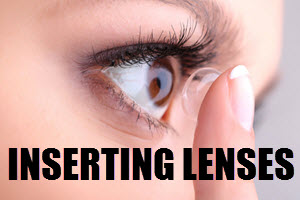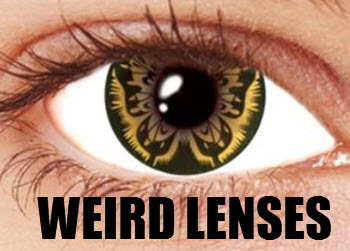The Importance of Hygiene When Using Decorative Lenses
Decorative lenses, often referred to as cosmetic or fashion lenses, have gained popularity for their ability to change the appearance of the eyes. While they can enhance one’s look, it’s crucial to understand the significance of proper hygiene to prevent infections and ensure ocular health.
Understanding Decorative Lenses
Decorative lenses are fashion accessories worn to alter the color or design of the eye. Unlike prescription contact lenses, they do not correct vision but are available in various patterns and colors for aesthetic purposes. Despite being non-corrective, they are still considered medical devices, which means they must be handled with care.
Potential Risks Without Proper Hygiene
Using decorative lenses without proper hygiene can lead to several eye health issues. Infections, which can be caused by bacteria, fungi, or other pathogens, are a primary concern. These microorganisms can easily adhere to lenses, leading to conditions such as keratitis, an infection that can damage the cornea if not properly treated. Users must be diligent because infections can start subtly and progress quickly, often requiring medical intervention to prevent lasting damage.
Corneal abrasions are another risk associated with poor hygiene. These occur when foreign particles contaminate lenses and scratch the cornea during use. Such abrasions not only cause significant discomfort but also create an entry point for infections, compounding the risk to the wearer’s vision.
Allergic reactions are possible when cleanliness is not prioritized. The use of unclean solutions or improper cleaning methods can lead to allergic reactions. These reactions can manifest as redness and itching, significantly affecting the wearer’s comfort and eye safety.
Essential Hygiene Practices
To minimize the risks associated with decorative lenses, it’s vital to follow specific hygiene practices. Here are some essential steps:
Proper Cleaning and Storage: It is critical to always clean lenses with solutions specifically recommended for that purpose. Common solutions usually contain disinfectants designed to remove deposits, destroy harmful microorganisms, and rinse away debris from the lens surface. Importantly, one should never resort to using water, saliva, or household liquids to clean lenses as they are not sterile and can introduce hazardous microorganisms to the lenses. The lens storage case plays a significant role in hygiene practices by providing a safe, clean environment while lenses are not in use; thus it is important to replace the storage solution daily.
Hand Hygiene: The importance of clean hands during lens handling cannot be overstated. Before touching lenses, wash your hands thoroughly with soap and water, ensuring all soap is rinsed off to avoid any residue. Be sure to dry them with a lint-free towel to eliminate the risk of transferring dirt or bacteria from your hands to the lenses. This simple practice is instrumental in preventing the spread of pathogens to the eye.
Avoid Sharing: Sharing decorative lenses with others is strongly discouraged. Sharing can lead to the transmission of harmful bacteria and viruses that can result in serious eye infections. Each individual’s eye carries unique bacterial flora, and transferring lenses can disrupt this balance, leading to infections.
Regular Replacement: Adhering to a lens replacement schedule is equally important as basic hygiene. Follow the lens replacement schedule prescribed by your eye care professional. Outdated lenses may become breeding grounds for bacteria and lose their structural integrity, raising the risk of complications during use.
Consultation and Purchase
Always consult an eye care professional before using decorative lenses, even if they are not intended for vision correction. A professional consultation ensures that the lenses fit correctly and provides an opportunity to discuss any eye health concerns. An ill-fitting lens can lead to discomfort and potential damage to the surface of the eye.
Purchasing lenses from reputable sources is fundamental in safeguarding ocular health. Ensure that the vendor complies with regulatory standards set for contact lenses. This is crucial since lenses acquired from unauthorized sellers may be of inferior quality, posing substantial risks to users. Unauthorized providers may also not provide adequate information on proper lens care, increasing the likelihood of poor hygiene practices.
For more information on eye health, you can visit trusted organizations like the American Academy of Ophthalmology. They offer important guidelines and support resources focused on maintaining ocular health.
By adhering to these hygiene practices, users can enjoy the aesthetic benefits of decorative lenses while minimizing potential harm to their eye health. It’s important to remember that maintaining proper lens hygiene isn’t just about comfort; it’s about protecting your vision. Proper hygiene practices create a safer experience for the user, uphold the quality of the lenses for longer periods, and ensure that the risk of infection remains low during the use of decorative lenses.
Beyond the personal level, adopting good hygiene habits forms part of wider public health practices, by reducing unintentional participation in the spread of potential infectious agents. The combination of fitting consultation, informed purchasing, and thorough upkeep plays a crucial role in how effectively these decorative lenses can be enjoyed, ensuring that they remain a safe and fun fashion statement.



 Cosmetic contact lenses
Cosmetic contact lenses